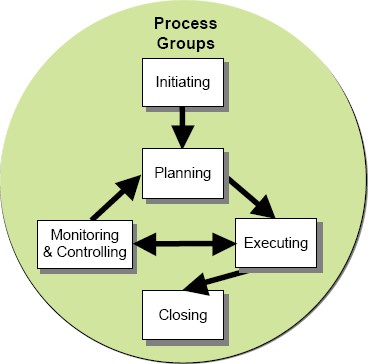Phases of a Project
Overview of Project Phases

The typical phases of a project include:
-
Conceptualization
-
Feasibility
-
Preliminary planning
-
Detailed planning
-
Execution
-
Testing
-
Termination
Understanding each phase is crucial for navigating the project lifecycle from idea to completion.
Phase 1: Initiating
-
Identify the need for the project
-
Determine what the project should accomplish
-
Define the overall goal
-
Identify key stakeholders and initial team members
-
Outline the general scope
The initiation phase sets the foundation for the project by clarifying its objectives and assembling the team.
Phase 2: Planning
-
Refine the project scope
-
List tasks and activities
-
Sequence activities optimally
-
Develop a schedule and budget
-
Get approval from stakeholders
Detailed planning ensures that the project is feasible and that all stakeholders are aligned on expectations and resources.
Phase 3: Executing
-
Lead the project team
-
Hold regular meetings
-
Communicate progress to stakeholders
-
Resolve issues as they arise
-
Secure additional resources as needed
Execution is about putting the plan into action and continuously managing the process to keep the project on track.
Phase 4: Controlling
-
Monitor the project’s progress against the plan
-
Take corrective actions as needed
-
Reschedule or reallocate resources if required
-
Handle change requests
-
Adjust the scope if necessary
Control mechanisms ensure that the project stays aligned with its goals, allowing for adjustments when deviations occur.
Phase 5: Closing
-
Acknowledge accomplishments
-
Disband the team and wrap up operations
-
Conduct a final review of the project process and outcomes
-
Write a final report with lessons learned
Closing a project properly is crucial for drawing conclusions, learning for the future, and ensuring a clean handover or shutdown.
 .pdf
.pdf